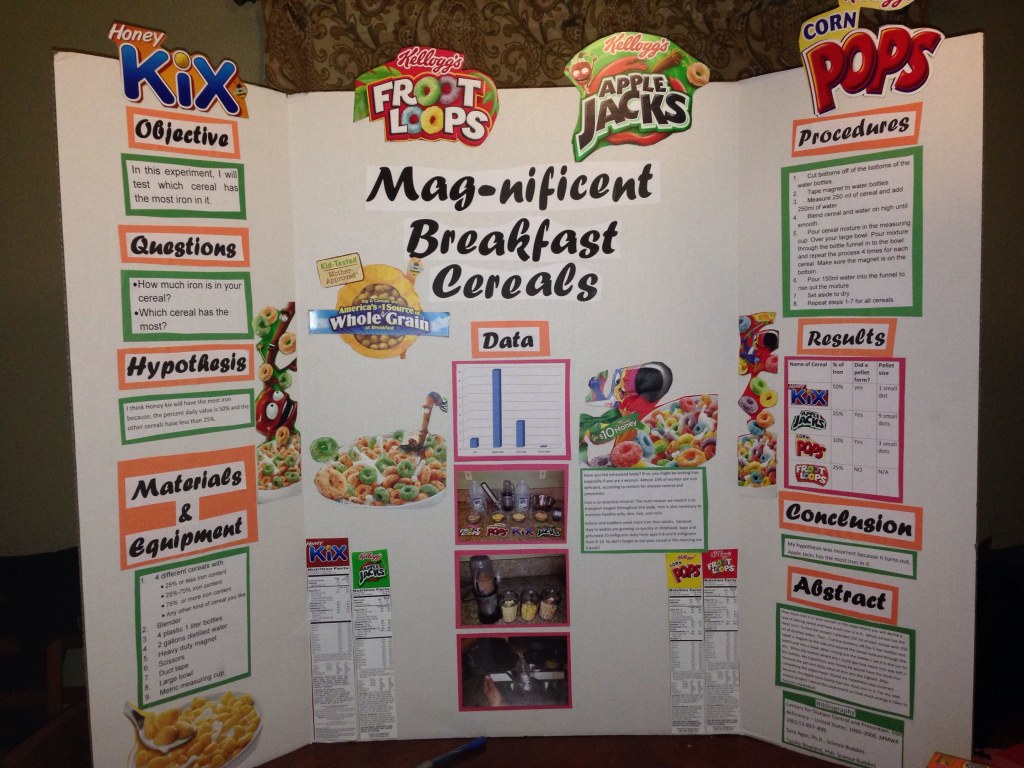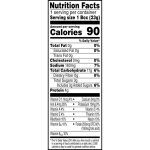Cereal Science Fair Project: Uncover The Secrets Of Breakfast Delights With Exciting Experiments!
Cereal Science Fair Project: Exploring the Fascinating World of Cereal
Introduction
Hello, Cereal Connoisseurs! Welcome to the exciting realm of cereal science fair projects. In this article, we will delve into the depths of cereal experimentation and exploration. Whether you are a cereal enthusiast or a curious student looking for an intriguing project idea, this article will provide you with valuable insights and guidance on how to create your very own cereal science fair project.
1 Picture Gallery: Cereal Science Fair Project: Uncover The Secrets Of Breakfast Delights With Exciting Experiments!

Before we jump into the specifics, let’s take a moment to appreciate the significance of cereal in our lives. Cereal has been a staple breakfast option for millions of people around the world. It not only provides us with essential nutrients but also offers a wide variety of flavors and textures that cater to our taste preferences. By conducting a cereal science fair project, we can uncover the scientific principles behind this beloved food and gain a deeper understanding of its properties.

Image Source: pinimg.com
In this article, we will explore various aspects of cereal science fair projects, including what they are, who can participate, when and where to conduct them, why they are beneficial, and how to execute them successfully. So, grab a bowl of your favorite cereal and let’s embark on this exciting journey together!
What is a Cereal Science Fair Project?
🔍 A cereal science fair project is an experiment or investigation that focuses on exploring different aspects of cereal. It involves formulating hypotheses, conducting experiments, collecting data, and analyzing results to gain insights into various scientific phenomena related to cereal.
📚 One example of a cereal science fair project could be examining the effect of different milk temperatures on the texture and taste of cereal. By conducting this experiment, you can determine the optimal milk temperature for enjoying a bowl of cereal, based on personal preferences and scientific observations.
🔬 Cereal science fair projects provide an excellent opportunity to apply scientific principles to a real-life scenario, fostering critical thinking, problem-solving skills, and creativity.
Who Can Participate in Cereal Science Fair Projects?
👨👩👧👦 Cereal science fair projects are suitable for students of all ages, from elementary school to high school. These projects can be adapted to different grade levels, ensuring that every student can engage in a meaningful and educational experience.
📐 Additionally, cereal science fair projects can be conducted individually or in groups, allowing students to collaborate, share ideas, and learn from one another. It also provides an opportunity for parents and teachers to guide and support students throughout the project.
When and Where to Conduct Cereal Science Fair Projects?
📅 Cereal science fair projects can be conducted at any time during the school year or even during summer breaks. It is a flexible project option that can fit into various academic schedules and timelines.
🏫 As for the location, cereal science fair projects can be carried out both at home and in school. The experiments can be conducted in the comfort of your own kitchen or in a science laboratory, depending on the resources and facilities available.
Why Choose Cereal Science Fair Projects?
✅ Cereal science fair projects offer a multitude of benefits for students, both academically and personally.
🧠 They stimulate scientific inquiry and promote hands-on learning, allowing students to develop a deeper understanding of scientific concepts and principles.
💡 Cereal science fair projects encourage creativity and critical thinking. Students can design their experiments, formulate hypotheses, and analyze data to draw meaningful conclusions.
🌍 Furthermore, cereal science fair projects raise awareness about the importance of nutrition and healthy eating habits, as students explore the nutritional aspects of cereal and its impact on their well-being.
🏆 Lastly, participating in cereal science fair projects provides students with an opportunity to showcase their knowledge, skills, and enthusiasm for science in a competitive and supportive environment.
How to Execute a Successful Cereal Science Fair Project?
📝 To ensure the success of your cereal science fair project, here are six key steps to follow:
1️⃣ Choose a specific research question or topic related to cereal that interests you.
2️⃣ Conduct background research to gather information about your chosen topic and formulate a hypothesis.
3️⃣ Design an experiment to test your hypothesis, ensuring it is clear, controlled, and measurable.
4️⃣ Gather and analyze data, paying attention to any patterns, trends, or significant findings.
5️⃣ Draw conclusions based on your data and evaluate the validity of your hypothesis.
6️⃣ Present your findings in a clear, organized, and visually appealing manner, including charts, graphs, and photographs.
Advantages and Disadvantages of Cereal Science Fair Projects
Advantages:
1. 🌱 Cereal science fair projects promote scientific literacy and foster a passion for learning in students.
2. 🌐 They encourage interdisciplinary learning by incorporating elements of biology, chemistry, physics, and nutrition.
3. 🤝 Cereal science fair projects offer an opportunity for collaboration and teamwork, enhancing social and communication skills.
Disadvantages:
1. ⏰ Cereal science fair projects require careful planning and time management, which can be challenging for students with busy schedules.
2. 💰 Some experiments may require specific materials or equipment, which can be costly or difficult to obtain.
3. 😅 The process of conducting experiments may involve trial and error, leading to unexpected results or setbacks.
Frequently Asked Questions (FAQ)
Q1: Can I conduct a cereal science fair project using different types of cereals?
A1: Absolutely! You can explore the effects of various cereals on factors such as milk absorption, texture, and taste.
Q2: Are there any safety measures to consider while conducting cereal science fair projects?
A2: It is important to follow general safety guidelines, such as handling kitchen utensils and hot liquids with care.
Q3: Can I involve taste testing in my cereal science fair project?
A3: Yes, taste testing can be a valuable component of your experiment, allowing you to gather subjective data on flavor preferences.
Q4: How can I make my cereal science fair project stand out?
A4: You can add creativity to your project by incorporating visual elements, such as photographs or videos, to enhance your presentation.
Q5: Can I conduct experiments with cereals and non-dairy milk alternatives?
A5: Absolutely! You can explore the interaction between non-dairy milk alternatives, such as almond milk or soy milk, and cereals.
Conclusion
In conclusion, embarking on a cereal science fair project opens up a world of exploration and discovery. By conducting experiments and analyzing data, you can gain a deeper understanding of the scientific principles that underlie our favorite breakfast food. Whether you choose to investigate the effects of different milk temperatures, explore the nutritional content of cereals, or delve into the fascinating world of cereal textures, your project is sure to provide valuable insights and spark your curiosity.
So, grab your lab coat and cereal box, and let your scientific journey begin! By participating in cereal science fair projects, you not only expand your knowledge but also contribute to the ever-growing body of cereal science. Remember, the world of cereal is waiting to be explored, and you have the power to unravel its secrets!
Final Remarks
Disclaimer: The information presented in this article is for educational purposes only. The reader is responsible for conducting experiments safely and obtaining necessary permissions if conducting the project in a school or controlled environment. The author and website hosting this article disclaim any liability for any damages or injuries caused by the implementation of the ideas and suggestions presented herein.
This post topic: Cereal



